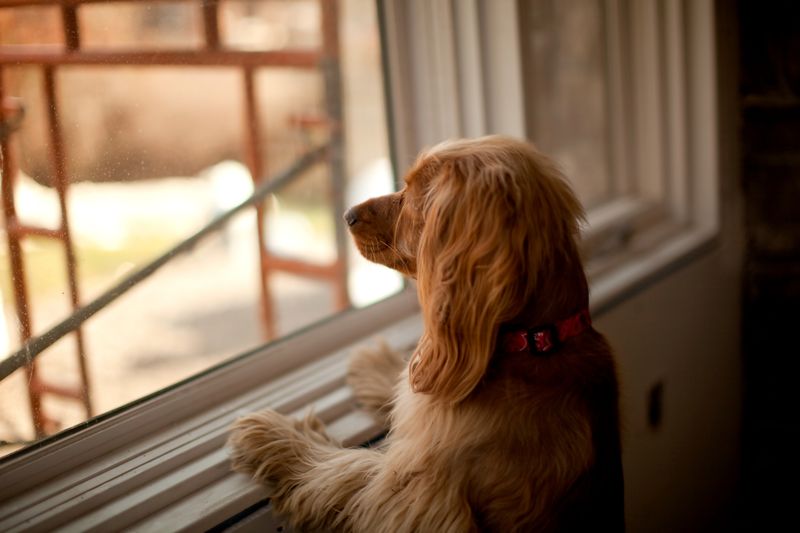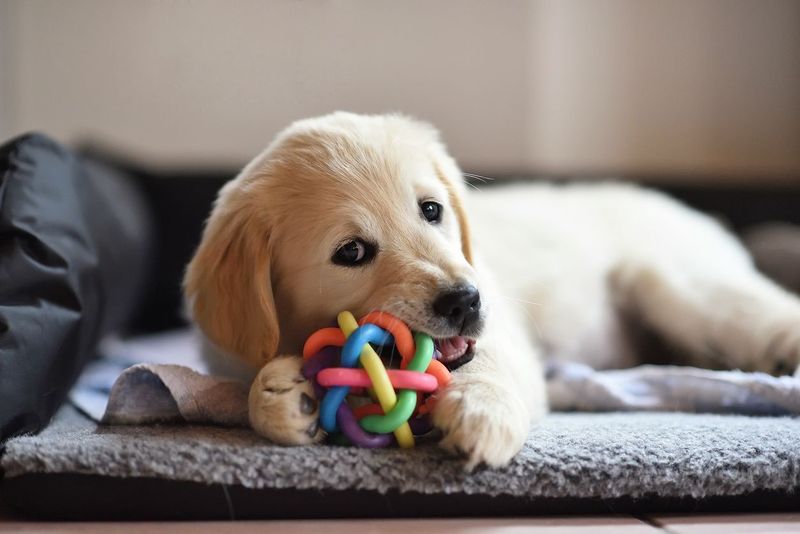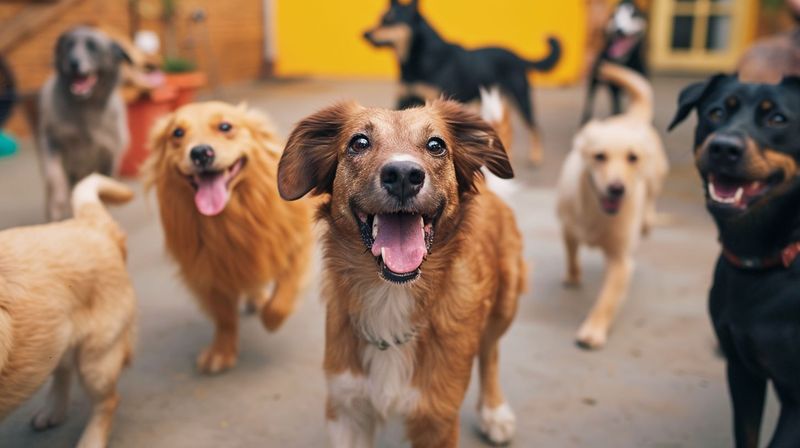📖 Table of Content:
Separation anxiety in dogs is a common behavioral issue that can be distressing for both pets and their owners.
It occurs when a dog becomes stressed or anxious due to being left alone or separated from its owners, leading to destructive behavior, excessive barking, and other symptoms.
Fortunately, with the right approaches, this anxiety can be managed effectively. Here are 7 proven ways to help your furry friend feel more comfortable and secure when alone.
7. Create a Safe Space
Creating a safe space for your dog can greatly alleviate separation anxiety. This area acts like a sanctuary where your pet feels secure. Start by selecting a quiet corner of your home, away from heavy foot traffic and noise. Add a comfortable bed where your dog can relax. Place some of their favorite toys nearby to keep them entertained.
Consider using a calming pheromone diffuser, which releases scents that help soothe anxious dogs. This space should be associated with positive experiences. Spend time with your dog in this area while you’re at home, offering treats and affection.
Gradually, your dog will begin to associate this space with comfort and safety. Make sure this area remains consistent, as frequent changes can increase anxiety. Over time, this dedicated spot can become a reassuring haven for your pet, reducing stress when you’re away.
6. Implement a Routine
Dogs thrive on routine and predictability, which can help ease separation anxiety. Establish a consistent schedule for feeding, walks, and playtime. This routine will give your dog a sense of structure and security. When your pet knows what to expect, it can help reduce anxiety and stress.
Begin by setting regular times for meals. Ensure that you stick to these times daily, as changes can cause confusion and anxiety. Similarly, schedule daily walks at the same time each day. Physical exercise is crucial for keeping your dog calm and balanced.
Finally, allocate specific times for play and bonding. Engage in activities your dog enjoys, such as fetch or tug-of-war. By adhering to a daily routine, your dog will feel more secure, making it easier for them to cope when you’re not around.
5. Use Gradual Departures
Gradual departures can help a dog adjust to being left alone. Start by simulating leaving the house: pick up your keys, put on your coat, but don’t actually leave right away. This helps the dog get used to the cues without the separation.
Initially, leave for only a few minutes. Gradually increase the time you’re away. Return calmly, without making a fuss, to show that departures and arrivals are normal. This practice helps desensitize your dog to being alone, minimizing anxiety.
Patience is key. Each dog adjusts at their own pace, so slowly increase the duration of absences as your dog becomes more comfortable. Celebrate small victories with treats and praise. Over time, your dog will learn that your absence is temporary and that you will always return.
4. Provide Interactive Toys
Interactive toys are a fantastic way to keep your dog engaged and distracted while you’re away. These toys stimulate your dog’s mind, providing them with a fun challenge that can alleviate anxiety.
Puzzle feeders are particularly effective, as they require your dog to work for their food. This not only keeps them occupied but also slows down their eating, preventing digestive issues. Other interactive toys might dispense treats or make noises that captivate your dog’s attention.
Make sure to rotate the toys regularly to keep your pet’s interest piqued. A well-engaged dog is less likely to feel anxious because their focus is on the enjoyable task at hand. Providing these mental stimuli can make a significant difference in how your dog copes with your absence.
3. Hire a Pet Sitter
Hiring a pet sitter can be an excellent way to manage separation anxiety. A pet sitter offers companionship and care when you can’t be there, providing comfort to your dog.
Look for a sitter who has experience with dogs suffering from anxiety. They should be patient, understanding, and ready to engage with your pet in play and routine activities. This personal attention can significantly reduce anxiety levels.
Having a familiar face around adds a layer of security for your dog. It helps maintain their daily routine, ensuring that your absence is less impactful. A good pet sitter can provide updates and reassurance, allowing you to be comfortable knowing your pet is in good hands.
2. Consider Dog Daycare
Dog daycare offers a dynamic environment for your pet, full of opportunities for exercise, socialization, and mental stimulation. This option can be particularly beneficial for dogs that struggle with separation anxiety.
In daycare, your dog is surrounded by other dogs, which can help to alleviate loneliness. The constant activity and interaction can distract them from missing you. Furthermore, professional daycare staff are trained to handle anxious dogs and can provide specialized attention if needed.
Choose a daycare center with good reviews and a caring staff. Visit the facility to ensure it’s clean and safe. Regular attendance can help your dog adjust to being away from home, building their confidence and reducing anxiety over time.
The combination of play, interaction, and care makes dog daycare a valuable option for managing anxiety.
1. Try Behavioral Training
Behavioral training can be immensely helpful in managing separation anxiety. This method involves teaching your dog to respond calmly to being left alone through specific training exercises.
Professional trainers can assess your dog’s behavior and provide customized strategies to address anxiety. Techniques might include desensitization, counter-conditioning, and positive reinforcement to create new, healthier associations with being alone.
Investing in training not only benefits your dog but also strengthens the bond between you. It empowers you with tools and knowledge to manage anxiety more effectively. Through consistent, positive training, your dog can learn to cope better with separation, leading to a happier, more relaxed pet.
Over time, this approach can significantly reduce symptoms of anxiety, making departures less stressful for both of you.







